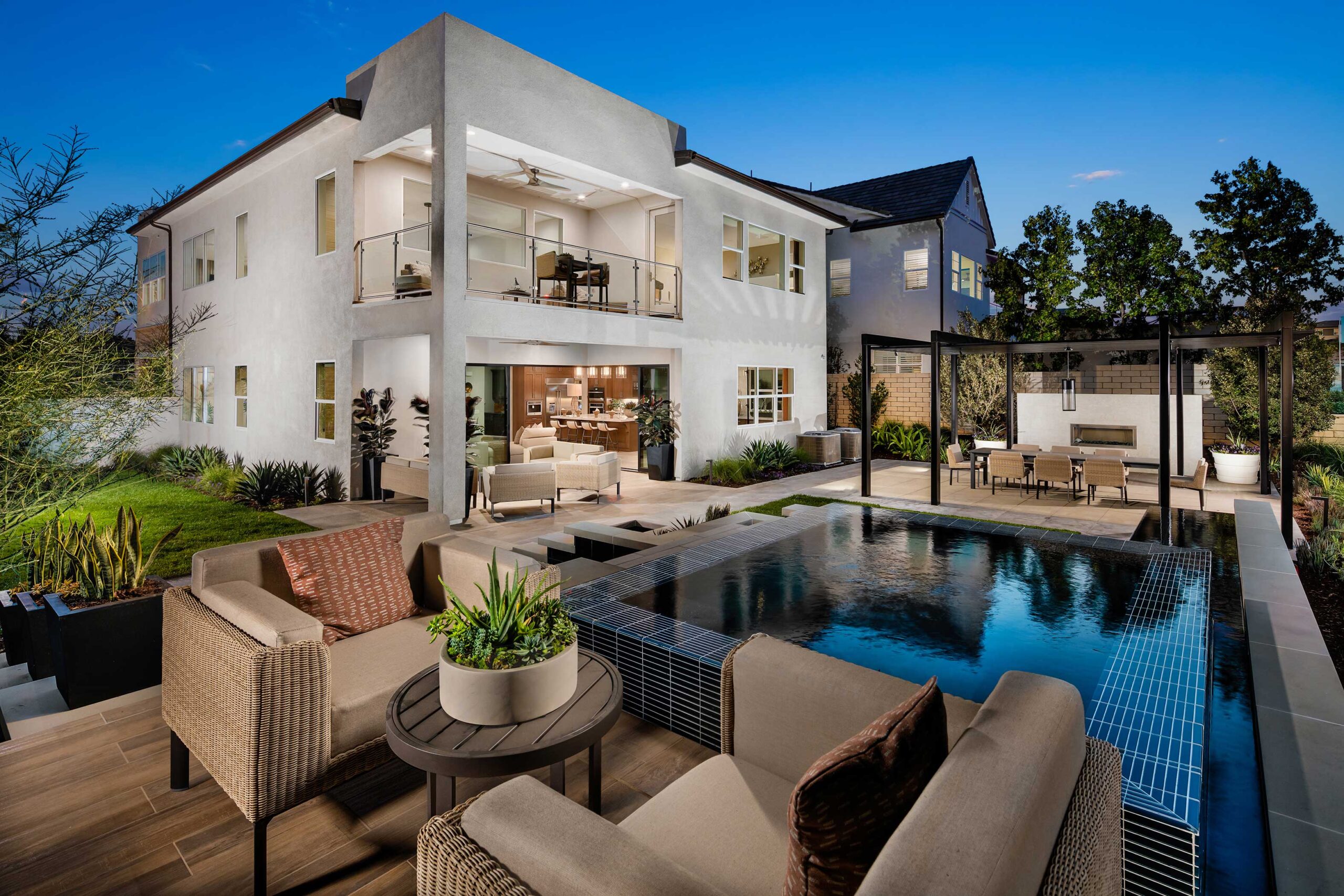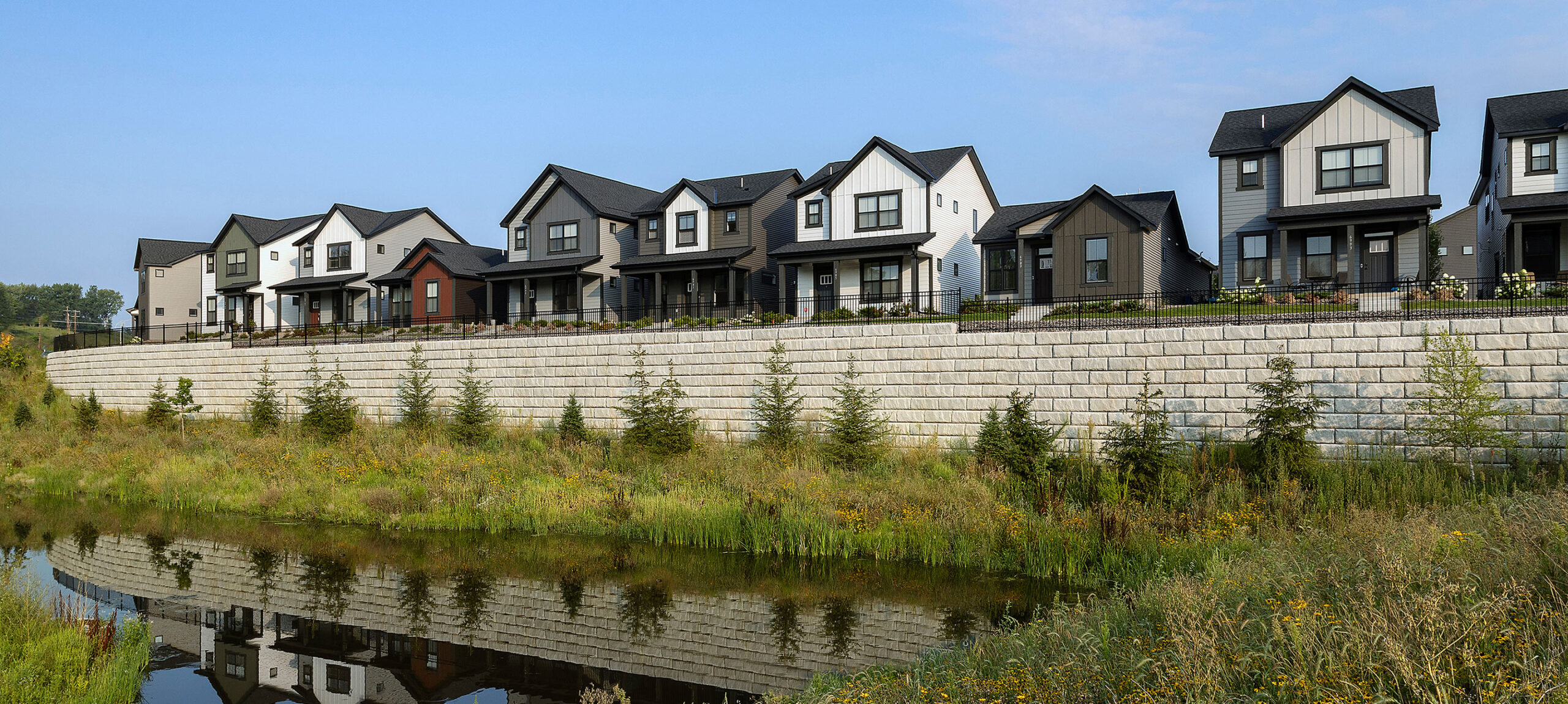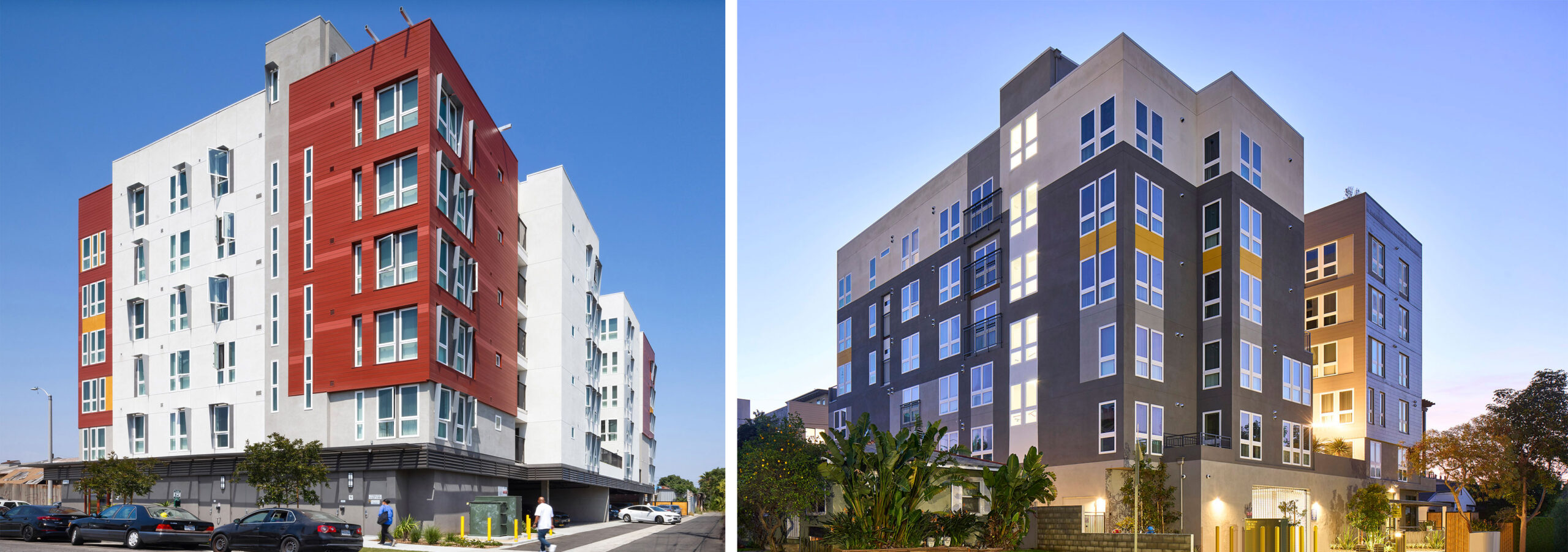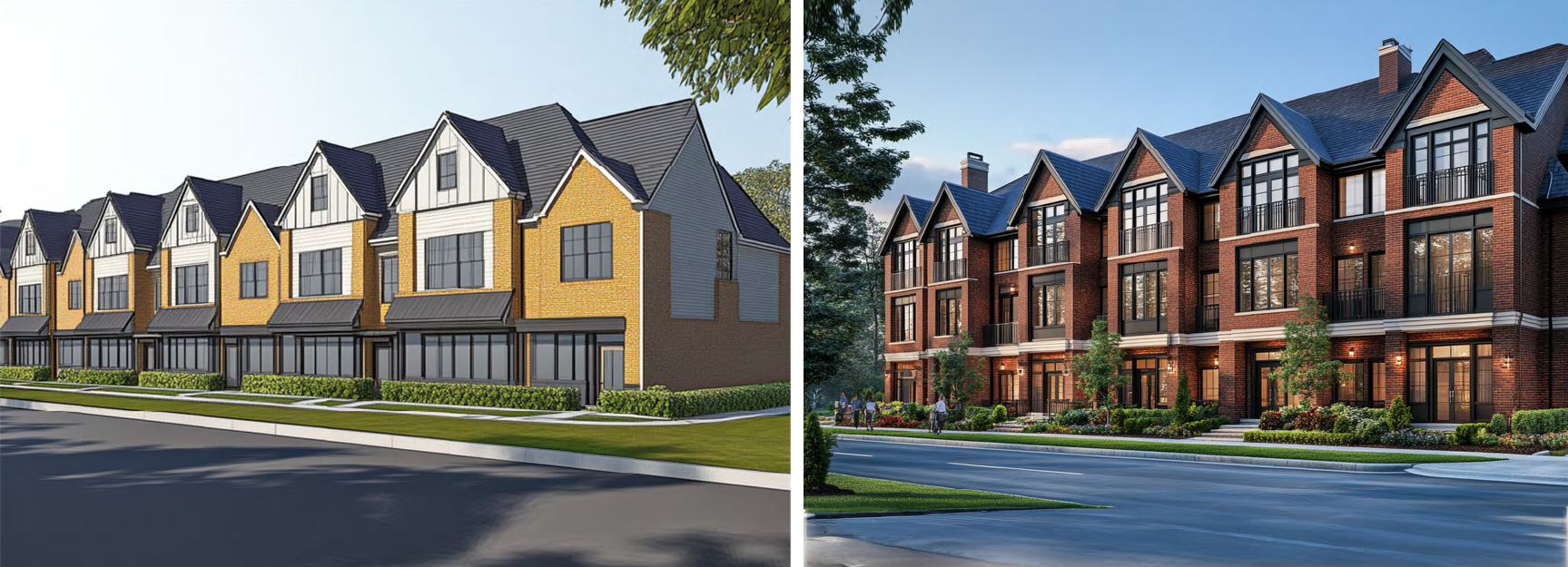This year is posing an interesting dilemma for new home design. When markets soften, builders tend to tap the brakes. But pulling back doesn’t play out well when the market rebounds. And as recent years have proven, consumers have set high standards for design. In the past, traditional architecture was the go-to, leveraging nostalgic visions of “home” and tugging just enough on buyer heartstrings to make the sale. But buyer preferences are shifting away from traditional, non-descript architecture.
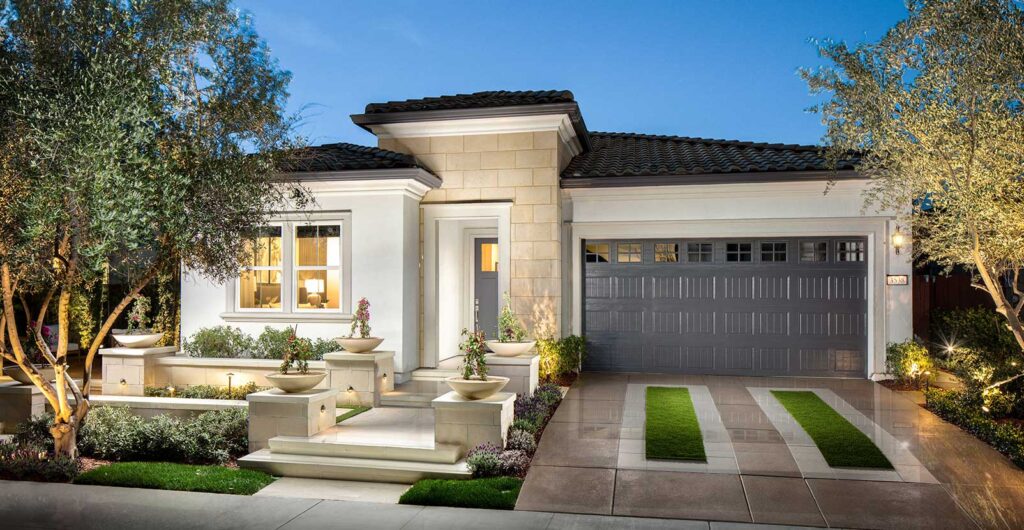
In response, 2023 exteriors are leaning decidedly modern with transitional interpretations of traditional styles. At all price points, builders have realized return on investment for higher end products, siding, metal roof accents, prefab columns and the like. Stylizing historic elevations with careful and deliberate detailing creates intriguing exteriors. The undertone of classic architecture will still be there, modernized by the simplicity of cleaner lines and forms. Color, finishes, artwork and furnishings will follow suit.
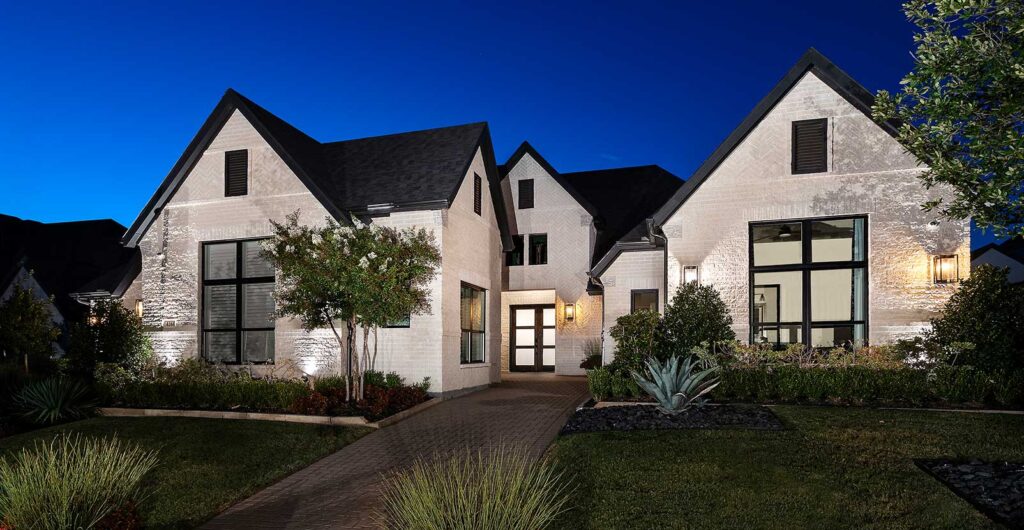
Not only are contemporary looks dominating, but they include enhanced detailing on side and rear elevations. Rear outdoor areas will continue to become true living environments, mirroring the size and functionality of their indoor counterparts. Patios now have living rooms, kitchens and dining rooms, so homeowners obviously anticipate spending more time outside. No one wants to sit around the firepit looking at a blank, boring rear elevation. Interesting use of materials and color is now just as important on the rear as it always has been on the front. Brackets, shutters, window banding and upgraded columns with caps and base bands will be painted a secondary trim color for differentiation. This minimal additional expense (as little as $1,200) can increase perceived value tenfold.
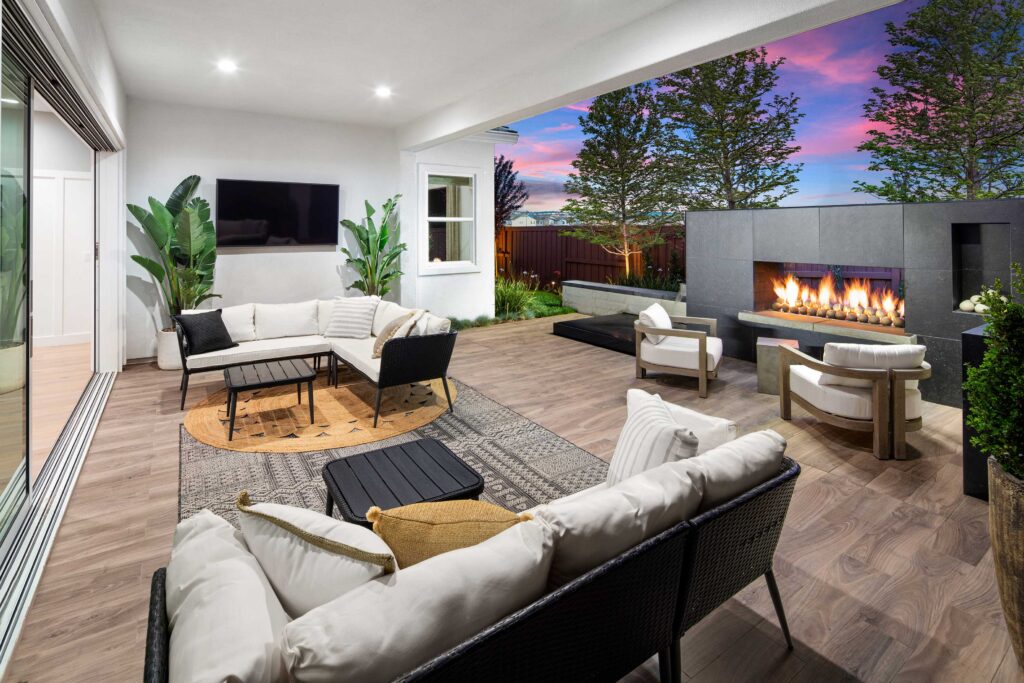
Another driver of increased detailing is the growth of build to rent, where four-sided design is a necessary consideration. Jurisdictions are leery of higher density, and all unit sides can often be seen by neighbors or from parking areas and amenity spaces. To compensate, BTR homes will offer simple but effective detailing on all sides. For sale product will, too, primarily on the rear, but we may see more and more builders including modest detailing (brackets, color changes, even gables) on side elevations, too.
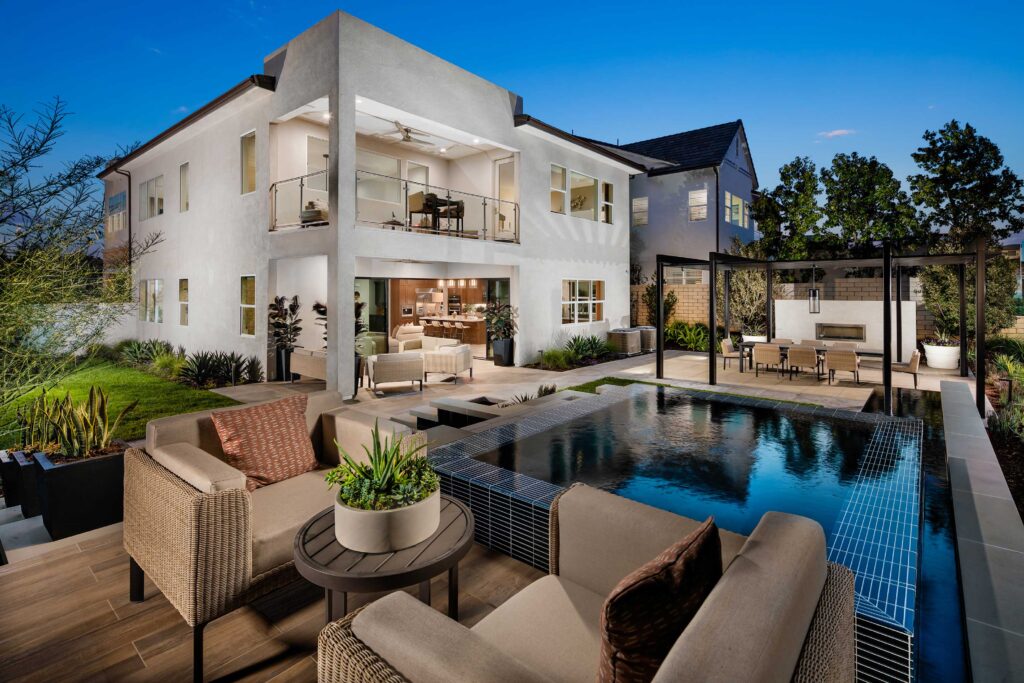
BTR and multifamily communities push new single family builders to focus on tech and amenities. Consumers no longer just purchase homes, they buy into neighborhoods. Those transitioning from newer rentals will likely have experienced technology as a given: Full wifi connectivity, including plugs, switches, thermostats and outdoor coverage; video monitoring, doorbells, and alarms; access to incredible amenity buildings with the latest lifestyle trends. This includes game rooms in lieu of the old-school “great room with sofas”. It will be much more common to find a VR console or Xbox and big screen TV than two wingback chairs and a coffee table.
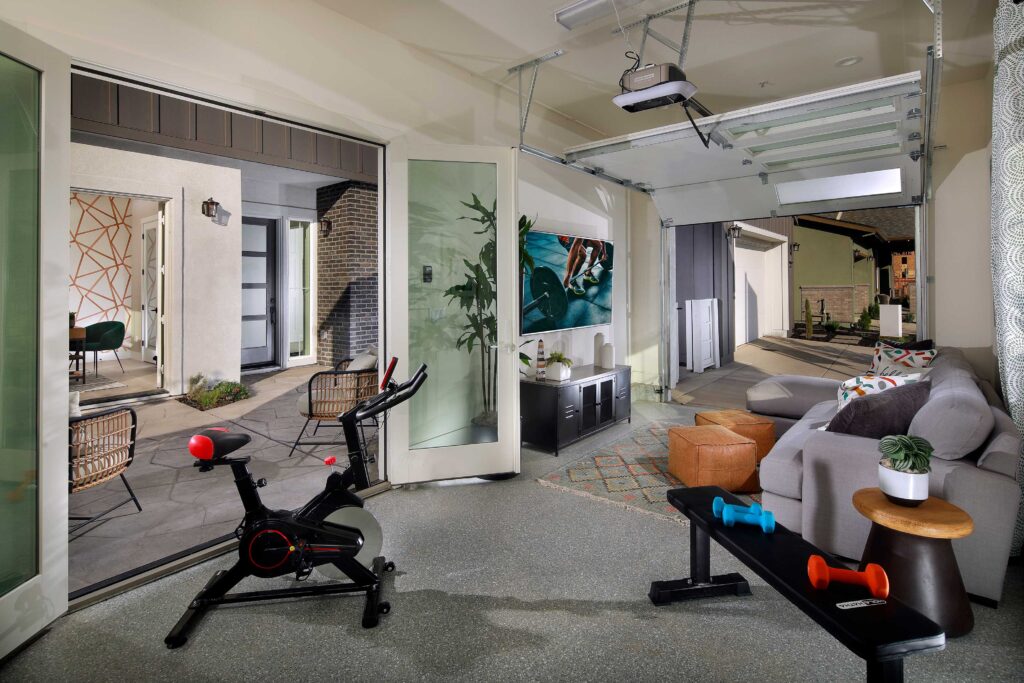
The most important design trend in 2023 centers around space use. NAHB shares data about how average home sizes rise and fall, often correlating to the current economic condition. But I argue that homes in 2023 won’t change size at all – they’ll just allocate space differently. Designers used to say “the living room is dead,” but it’s actually alive and well. We just call it the “Flex Room” now, and how builders incorporate and offer flexible space in new homes will be their most important design decision next year.
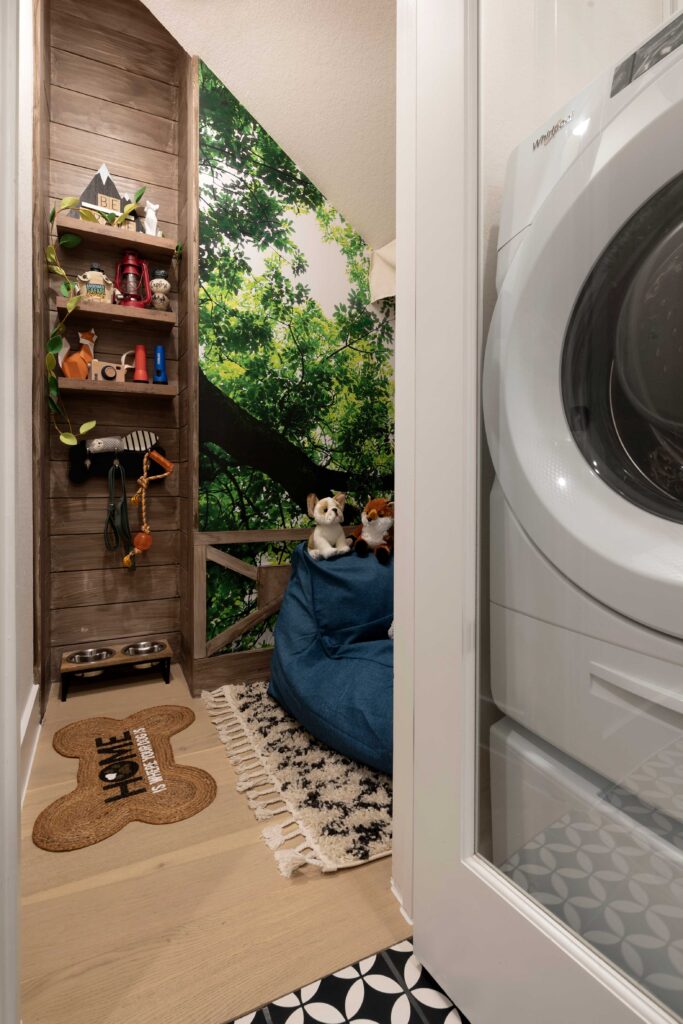
So if the square footage is relatively unchanged, how does space get reallocated? A few areas will be impacted, including the classic 12 x 14 office with its oversized furniture. Remote work demands less, more functional space, leaving additional square footage for larger closets or enhanced pantries with morning kitchens. Standard 11 x 11 secondary bedrooms will grow a bit to accommodate desks or chairs. Niche spaces will continue to help builders market and sell homes because consumers love them. Pocket offices, flex rooms, and storage solutions need more focus and higher design.
Next year, like every “next year”, will provide builders with opportunities to refine their designs. By addressing consumer preference for transitional styles, detailing on all sides of the home, activated outdoor living, and thoughtful niches that reallocate square footage (not decrease it), 2023 will bring some amazing new homes to market. I can’t wait to see them.
